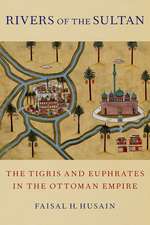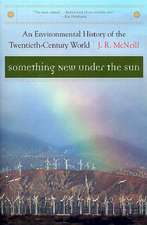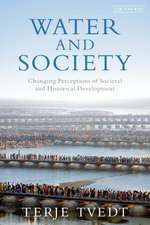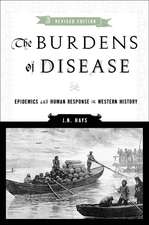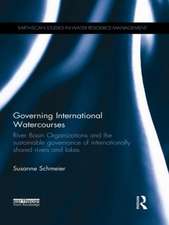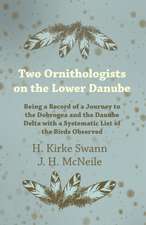The Lower Danube River: Hydro-Environmental Issues and Sustainability: Earth and Environmental Sciences Library
Editat de Abdelazim Negm, Liliana Zaharia, Gabriela Ioana-Toroimacen Limba Engleză Hardback – 15 iun 2022
This book provides essential information and recent findings on hydro-environmental issues in the Lower Danube River, particularly its hydrological and hydromorphological processes; physico-chemical features; climate and water-related hazards; and not only the biodiversity and quality but also the sustainable management and governance of its hydro-environment. Accordingly, it presents a broad range of scientific information on the lower sector of the second-longest river in Europe, which holds major economic importance and has been severely impacted by human pressures, especially since the second part of the last century. The engineering works (e.g. dams, reservoirs, levees, channelization, etc.) on the Danube and its tributaries, despite their benefits to society, have altered its flow and significantly reduced its sediment load, with consequences for hydromorphological processes and aquatic ecosystems. These ecosystems have also been affected by pollutionfrom various sources. To promote sustainable management of the Danube River and its watershed, several strategies and measures have been developed by a number of institutions, from the European level to the national and regional levels (commissions, national authorities, non-governmental organizations, etc.).
Compared to the upper and middle sectors of the Danube, the lower sector has received less attention in the international scientific literature in terms of hydro-environmental issues. The book fills this gap and provides current and original insights and findings from recent studies conducted by scientists from three countries drained by the Lower Danube River and its tributaries: Bulgaria, Romania and Serbia.
This unique book will be of great scientific interest to professional engineers, policy planners and policymakers in the three countries mentioned above, helping them to implement their own sustainable development plans. It also offers a valuable resource for graduate students, researchers and stakeholders.
Compared to the upper and middle sectors of the Danube, the lower sector has received less attention in the international scientific literature in terms of hydro-environmental issues. The book fills this gap and provides current and original insights and findings from recent studies conducted by scientists from three countries drained by the Lower Danube River and its tributaries: Bulgaria, Romania and Serbia.
This unique book will be of great scientific interest to professional engineers, policy planners and policymakers in the three countries mentioned above, helping them to implement their own sustainable development plans. It also offers a valuable resource for graduate students, researchers and stakeholders.
| Toate formatele și edițiile | Preț | Express |
|---|---|---|
| Paperback (1) | 741.06 lei 43-57 zile | |
| Springer International Publishing – 16 iun 2023 | 741.06 lei 43-57 zile | |
| Hardback (1) | 1019.67 lei 43-57 zile | |
| Springer International Publishing – 15 iun 2022 | 1019.67 lei 43-57 zile |
Din seria Earth and Environmental Sciences Library
- 18%
 Preț: 1115.46 lei
Preț: 1115.46 lei - 24%
 Preț: 732.78 lei
Preț: 732.78 lei - 20%
 Preț: 881.63 lei
Preț: 881.63 lei - 18%
 Preț: 997.09 lei
Preț: 997.09 lei - 15%
 Preț: 643.65 lei
Preț: 643.65 lei - 23%
 Preț: 828.71 lei
Preț: 828.71 lei - 24%
 Preț: 678.01 lei
Preț: 678.01 lei - 18%
 Preț: 1420.09 lei
Preț: 1420.09 lei - 18%
 Preț: 1124.15 lei
Preț: 1124.15 lei - 18%
 Preț: 885.00 lei
Preț: 885.00 lei - 18%
 Preț: 944.51 lei
Preț: 944.51 lei - 18%
 Preț: 741.06 lei
Preț: 741.06 lei - 18%
 Preț: 948.92 lei
Preț: 948.92 lei - 15%
 Preț: 642.51 lei
Preț: 642.51 lei - 18%
 Preț: 736.64 lei
Preț: 736.64 lei - 15%
 Preț: 703.52 lei
Preț: 703.52 lei - 18%
 Preț: 891.65 lei
Preț: 891.65 lei - 18%
 Preț: 956.03 lei
Preț: 956.03 lei - 15%
 Preț: 703.38 lei
Preț: 703.38 lei - 18%
 Preț: 1014.58 lei
Preț: 1014.58 lei - 18%
 Preț: 727.31 lei
Preț: 727.31 lei - 18%
 Preț: 783.98 lei
Preț: 783.98 lei - 18%
 Preț: 1119.56 lei
Preț: 1119.56 lei - 18%
 Preț: 734.09 lei
Preț: 734.09 lei - 18%
 Preț: 887.05 lei
Preț: 887.05 lei - 18%
 Preț: 1120.68 lei
Preț: 1120.68 lei - 18%
 Preț: 888.01 lei
Preț: 888.01 lei - 18%
 Preț: 953.35 lei
Preț: 953.35 lei - 15%
 Preț: 582.63 lei
Preț: 582.63 lei - 15%
 Preț: 646.94 lei
Preț: 646.94 lei - 15%
 Preț: 652.64 lei
Preț: 652.64 lei - 18%
 Preț: 1005.09 lei
Preț: 1005.09 lei - 18%
 Preț: 785.42 lei
Preț: 785.42 lei - 15%
 Preț: 591.79 lei
Preț: 591.79 lei - 18%
 Preț: 1120.05 lei
Preț: 1120.05 lei - 18%
 Preț: 944.99 lei
Preț: 944.99 lei - 18%
 Preț: 950.66 lei
Preț: 950.66 lei
Preț: 1019.67 lei
Preț vechi: 1243.49 lei
-18% Nou
Puncte Express: 1530
Preț estimativ în valută:
195.11€ • 204.26$ • 161.44£
195.11€ • 204.26$ • 161.44£
Carte tipărită la comandă
Livrare economică 07-21 aprilie
Preluare comenzi: 021 569.72.76
Specificații
ISBN-13: 9783031038648
ISBN-10: 3031038649
Pagini: 582
Ilustrații: XV, 582 p. 242 illus., 212 illus. in color.
Dimensiuni: 155 x 235 mm
Greutate: 1.01 kg
Ediția:1st ed. 2022
Editura: Springer International Publishing
Colecția Springer
Seria Earth and Environmental Sciences Library
Locul publicării:Cham, Switzerland
ISBN-10: 3031038649
Pagini: 582
Ilustrații: XV, 582 p. 242 illus., 212 illus. in color.
Dimensiuni: 155 x 235 mm
Greutate: 1.01 kg
Ediția:1st ed. 2022
Editura: Springer International Publishing
Colecția Springer
Seria Earth and Environmental Sciences Library
Locul publicării:Cham, Switzerland
Cuprins
Chapter 1. Introduction to “The Lower Danumbe delta" (Zaharia Liliana).- Part I: Hydrological and Hydromorphological Processess.- Chapter 2. General features of the hydro-sedimentary flows along the Lower Danube River (Zaharia Liliana).- Chapter 3. Comparative assessment of hydromorphological parameters in the context of riverbed morphology anthropic changes (Deák György).- Chapter 4. Dynamics of islands and Danube River channel in last 150 years (Vedea-Calarasi sector, Romania). Hydrogeomorphological approach (Florina Grecu).- Chapter 5. Analysis of Hydro-Sedimentary Processes and Fluvial Morphology along the Lower Danube River (Giurgiu-Calarași Reach) (Daniela E. Gogoașe Nistoran).- Chapter 6. Hydro-environmental specifics of the Lower Danube Bulgarian tributaries (M. Chilikova-Lubomirova).- Part II: Physico-chemical Features, Biodiversity and Quality of the Hydro- environment.
Notă biografică
Prof. Negm is a Professor of Hydraulics (and Water Resources) at Zagazig University. His current domain of research is sustainable water resources and their management. He is a member of IAHR, ICWEES, EGU, IAH. He is the head of the Egyptian permanent scientific committee for Water Resources (Committee no. 115, Supreme Council of Egyptian Universities). He is a member of the editorial board of several scientific journals, including IJESD, AJES, JEST, JHGGM, ENRRJ .. etc, associate editor-in-chief for Scientific African Journal, EJRS, and IWTJ issued by IWTA and guest editor in AJGS and EMJEI (Springer) and Water Journal (MDPI). He published more than 350 papers, 100 book chapters, and published 35 contributed volumes during the years from 2017-2021 in Springer International Publishing House. He led several international projects and participated in some others. He was nominated for many awards by IBC and ABI. He is listed in (a) Marquis Who is Who? (b) IBC's 2000 Outstanding Intellectuals of the 21st Century.
Liliana Zaharia graduated the Faculty of Geology and Geography, University of Bucharest (Geography-French specialization) and the postgraduate cycle “Hydrology and Water Resources Management”, jointly organized by EPF Lausanne, University of Neuchâtel and ETH Zürich. She received her Ph.D. in Geography in 1997. Since 2006 she is full Professor at the University of Bucharest, Faculty of Geography and since 2007 she is thesis director. Her fields of interest are continental hydrology, water resources management and water related risks. Prof. Zaharia is director of the research center “Water Resources and Hydrological Risks Management”. She authored 12 books/chapters and over 200 articles/abstracts (32 papers are published in ISI rated/indexed journals) and almost 250 presentations at scientific meetings. She coordinated 3 national research projects and 5 international projects (with France, Switzerland and Croatia). She was member of the research teams in 14 national projects and one international project. Since 2020 prof. Zaharia is vice president of the IGU Commission for Water Sustainability. She is/was member of many scientific associations and administrative structures.
Dr. Gabriela Ioana-Toroimac is currently assistant professor at University of Bucharest, Faculty of Geography in Romania and previously taught at University of Lille, UFR of Geography and Spatial Planning in France. She holds a doctoral degree in Geography since 2011. She works on river channel dynamics and interplay of various natural and human drivers on Danube River and its tributaries. The overall topic of her research is planning for healthy rivers, with a focus on a river’s hydromorphological quality and consequent restoration priorities to achieve a good status in the context of the requirements of the European Union Water Framework Directive. She was part of 10 funded research and teaching grants and she authored 10 book chapters, 30 articles in peer-reviewed journals, and over 100 presentations in scientific meetings. She is member of the IGU Commission for Water Sustainability and Romanian Association of Limnogeography.
Textul de pe ultima copertă
This book provides essential information and recent findings on hydro-environmental issues in the Lower Danube River, particularly its hydrological and hydromorphological processes; physico-chemical features; climate and water-related hazards; and not only the biodiversity and quality but also the sustainable management and governance of its hydro-environment. Accordingly, it presents a broad range of scientific information on the lower sector of the second-longest river in Europe, which holds major economic importance and has been severely impacted by human pressures, especially since the second part of the last century. The engineering works (e.g. dams, reservoirs, levees, channelization, etc.) on the Danube and its tributaries, despite their benefits to society, have altered its flow and significantly reduced its sediment load, with consequences for hydromorphological processes and aquatic ecosystems. These ecosystems have also been affected by pollution fromvarious sources. To promote sustainable management of the Danube River and its watershed, several strategies and measures have been developed by a number of institutions, from the European level to the national and regional levels (commissions, national authorities, non-governmental organizations, etc.).
Compared to the upper and middle sectors of the Danube, the lower sector has received less attention in the international scientific literature in terms of hydro-environmental issues. The book fills this gap and provides current and original insights and findings from recent studies conducted by scientists from three countries drained by the Lower Danube River and its tributaries: Bulgaria, Romania and Serbia.
This unique book will be of great scientific interest to professional engineers, policy planners and policymakers in the three countries mentioned above, helping them to implement their own sustainable development plans. It also offers a valuable resource for graduatestudents, researchers and stakeholders.
Compared to the upper and middle sectors of the Danube, the lower sector has received less attention in the international scientific literature in terms of hydro-environmental issues. The book fills this gap and provides current and original insights and findings from recent studies conducted by scientists from three countries drained by the Lower Danube River and its tributaries: Bulgaria, Romania and Serbia.
This unique book will be of great scientific interest to professional engineers, policy planners and policymakers in the three countries mentioned above, helping them to implement their own sustainable development plans. It also offers a valuable resource for graduatestudents, researchers and stakeholders.
Caracteristici
Presents a wide variety of current and original studies on hydro-environmental issues in the Danube River Addresses hydrological and hydromorphological processes and physico-chemical features Provides a road map and scientific information for sustainable management of the Danube River



